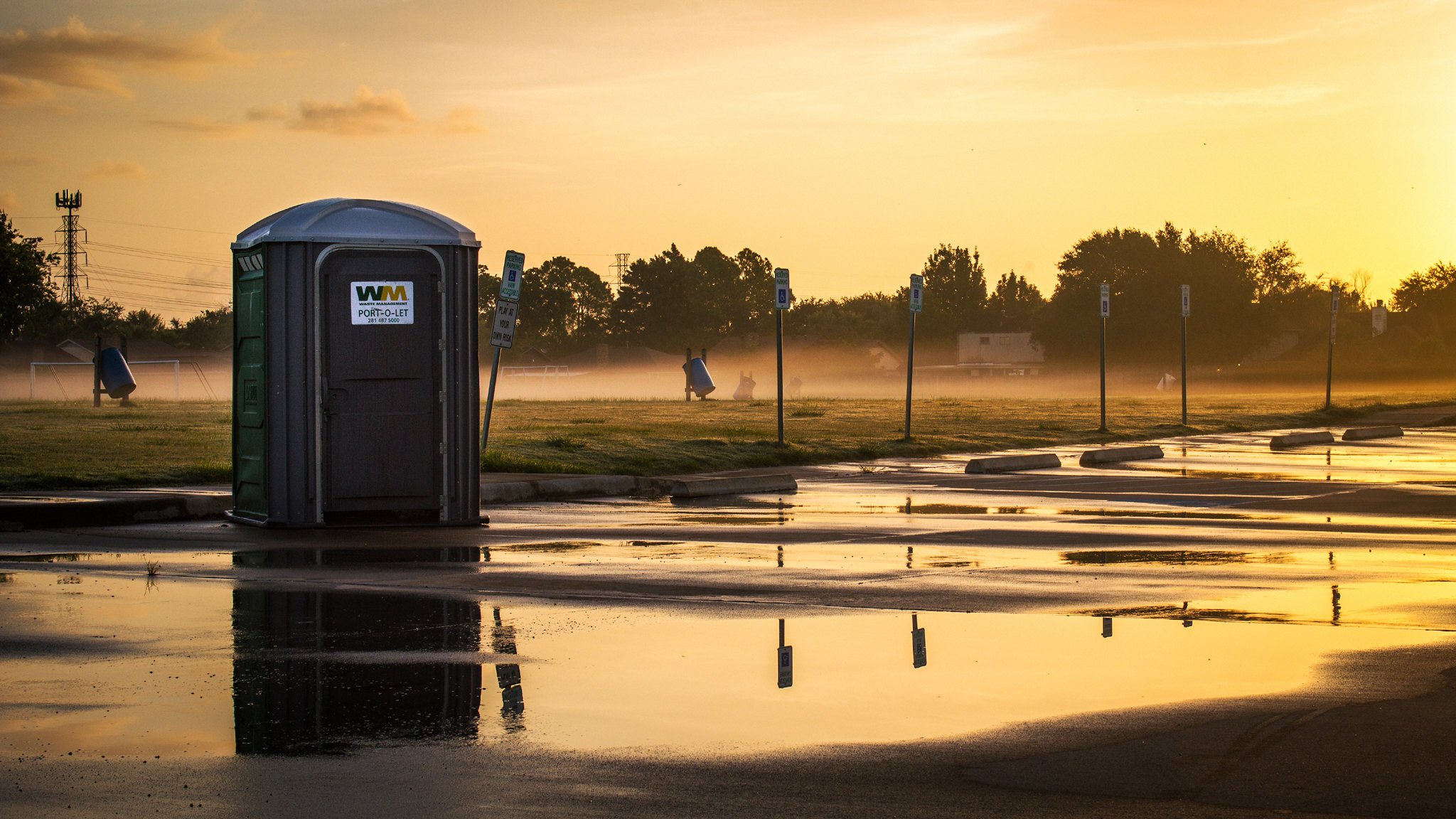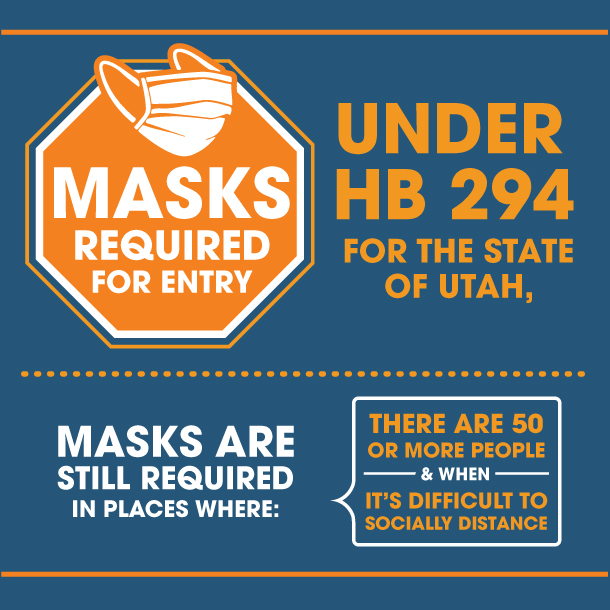Lifestyle
A Port-a-Potty Job Helped Her Escape Homelessness. Now She Watches Others Struggle.
Published
4 years agoon
By Alicia Moore 
Editor

SALT LAKE, Utah – Each time someone steps into the gray port-a-potty, Dawn Woudenberg tracks how long they remain inside.
“More than three or four minutes is cause for concern,” says Woudenberg, 22, her voice tempered with the authority of hard-earned experience.
Part of her $9-an-hour job as a bathroom attendant across the street from a shelter for homeless youths involves clearing the immediate area of needles and meth pipes. She’s lost track of the number of people who have overdosed inside the port-a-potty.
The last unconscious person she pulled out was a good friend, she says.
“She was puking,” Woudenberg remembers. “Next thing you know, I heard a thud in the bathroom.”
Woudenberg yanked the plastic bathroom door open. “I dragged her over by the bin,” she says, pointing to the place she stores her cleaning supplies, “and I started doing CPR on her.”
Woudenberg took the job a year and a half ago to pull herself out of homelessness in a city — and a country — where it was on the rise even before the pandemic.
On any given night, there are nearly 600,000 people sleeping in shelters or on the streets in the U.S., according to the federal government’s 2020 national point-in-time estimate. Many advocates for the unhoused say the true number of homeless Americans is much greater because it doesn’t include those who are couch surfing, living in hotels or who are simply so well hidden that the government trackers can’t see them.
Woudenberg used to sleep at the Volunteers of America (VOA) shelter across West Street from the port-a-potty, which is operated by a nonprofit. She sought the work because she knew it would qualify her for subsidized housing, which she desperately needed.
During her 18 months of homelessness, she called 911 more than 70 times for such strong bouts of anxiety and depression that they were leading to thoughts of suicide, said Salt Lake City Police Det. Joseph Taylor, who knows Woudenberg as well as many of those who use the port-a-potty.
Woudenberg’s job and studio apartment, her 10-year-old service dog, Red, and trauma therapy have helped stabilize her, she says. But here’s the thing about working and having a roof over her head Woudenberg never expected: Witnessing people experience homelessness is triggering.
It especially pained her when the city cleared the homeless from the area around the port-a-potty, forcing them to move to an increasingly long stretch of tents, makeshift cooking stations and cardboard boxes piled along 900 South.
“I know what it’s like to have almost nothing,” Woudenberg says, “and have that nothing taken away from you. It’s worse to watch than it is to live through.”
‘It blows my mind’
On a Friday in March, Woudenberg settles in for her six-hour shift, careful to absorb all that is happening around her — a dark blue helicopter hovering overhead, devoid of any emblem or letters; a man lying on his stomach on the cement in front of the shelter; a tall, muscular man with receding, red hair who is about to enter the port-a-potty — knowing she must stay vigilant.
“That area on 500 West is really bad,” said Taylor, the Salt Lake City detective. “You have legitimately homeless people and you have drug dealers who are armed there — and that means you have victims.”
There are 15 temporary port-a-potty locations for the homeless in Salt Lake City, which sits in a county where the number of unsheltered people grew by 6 percent in 2020, according to the State of Utah annual report on homelessness.
But when Salt Lake City Mayor Erin Mendenhall approved the addition of two portable restrooms in the Ballpark neighborhood, some residents expressed concern over the possible violence that the unhoused might bring to their community. Those toilets have since been removed.
“There are residents and business owners who don’t want the temporary restroom located near their home or business,” the mayor said. “I think that is understandable and part of the dynamic nature of rendering these services.”
There was no port-a-potty nearby when Woudenberg was homeless, she says.
Now she watches as a skinny 20-year-old with freckles sits on the ground, twirling a large, wide knife in his hands. He says his name is “Uncle Grandpa” and that he is not homeless because he has a bag that transforms into a chair and he sleeps wherever he wants. Then he stands up, walks over to a brick wall behind the port-a-potty and repeatedly throws his knife at the painted words: Be Kind. Be Brave. We Make The Future.
Jason Chandler, the tall man with red hair, exits the port-a-potty. Nine years ago, Chandler says, he owned a construction company and a house out in West Jordan, a suburb of Salt Lake City.
“I made about 100 grand for seven years in a row,” he says. “Things were good.”
But he was hit hard by a stock market dive in 2012, he says, and lost his money as well as his determination to bounce back. Now he’s living in one of the tents that stretches down 900 South.
He uses the port-a-potty twice a day, and in walking the block sees more than he ever wanted to witness.
“The things you see and hear and get into the middle of without even trying to — it blows my mind,” he says. “That’s why you have to stay oblivious to it.”
With an air of distant cordiality, Woudenberg nods as he leaves, then makes the first mark of the day on her toilet tracker sheet.
‘I am so scared’
A group of young people traipse between the shelter, port-a-potty, and line of tents, wearing a colorful hodgepodge of scarves, hats and leggings and bearing gifts of sodas and donated burritos wrapped in tinfoil. Few of them are wearing masks.
A blue Toyota Corolla slowly drives by and slows down by the port-a-potty, where four young people are hanging out with Woudenberg. Two men are inside the car, handing out chocolate Tootsie Rolls.
“Most people in this country are living paycheck to paycheck,” says Chris Machinksy, the man in the passenger’s seat. He and his friend, Bryce Foster, 73, have been distributing food here for months, both men say.
“If Jesus Christ were here, he would do the exact same thing,” Machinksy, 49 says. “So it’s a blessing to him and a blessing to us to serve him.”
The young people run over to the Toyota with an excitement reminiscent of little kids running to an ice cream truck, their empty hands waiting to be filled with something sweet.
Carlos Garcia, program manager of the Youth Resource Center for the VOA of Utah, worries all the time about the safety of the teens and young adults on the streets of Salt Lake City.
“The homeless youth here are extremely vulnerable — they are heavily targeted by literally everybody,” Garcia said. “They have to literally deal with that reality on a day-to-day basis.”
The VOA shelter on 400 West holds 30 beds for those between the ages of 15 and 22. Between July of 2019 and 2020, more than 260 young people. Five of them died of suicide, gun violence or drug overdoses, Garcia said.
One of his clients told recently told him: “Carlos, I am so scared and so worried about all these people who say they are here to do good for us — but I don’t know who they are, and they are asking me questions that I don’t feel like answering, and I just want them to leave me alone.”
‘Strung out’
A young woman with bright blue hair and a blue bike arrives at the toilet, panting. Her name is Serenity Peterson. At 19, she has been homeless since she was 12, she says. She ran away from home. Then she ran away from state-run group homes, she says.
She recounts being stalked and trafficked.
“I was kidnapped and drugged with heroin when I was 15,” she says. “I thought it lasted a week but it could have been longer — I was strung out on heroin and meth.”
Both her parents have been homeless, Peterson says, and she doesn’t have much of a relationship with either of them.
Peterson uses the port-a-potty, then climbs on her bike and rides away.
Woudenberg, who wears a black pony tail on the top of her otherwise shaved head, watches impassively. Her own collapse into homelessness was just as traumatic as Peterson’s.
Her parents put her in foster care when she was 14, she says. She had mental health issues and thought about suicide even then. Her dad has mostly worked for a moving company, and her mother has mostly worked at a dollar store, she says. Unable to afford the psychological care she needed, Woudenberg says, they put her in foster care where she could get state aid to pay for it.
Then two years ago, her grandmother — the one person who encouraged and understood her — died. Woudenberg wound up in a state hospital after trying to kill herself, she says. When her 5½-month stay was over, her parents had moved into a one-bedroom apartment with no room for her, Woudenberg says. So instead of going back home, Woudenberg went to the VOA youth shelter.
“I guess I felt a little abandoned,” she says.
Within weeks of her arrival, she signed up for the waiting list for housing, she says. But the thoughts of suicide continued. Once, during a police officer’s attempt to handcuff her outside the shelter and take her to a psych ward, Woudenberg says she felt confused and scared and kicked the officer in the shins. The incident resulted in a felony for assault, a charge that was later reduced to a misdemeanor. Still, finding work with an assault on her record proved difficult.
Her first job was at a security guard at a sports arena. But after three months, Woudenberg got laid off because of the pandemic. Her second job was the port-a-potty job.
The pay started out at $7.25 an hour, gradually building up to the current wage of $9 an hour, says Woudenberg’s boss, Ruthena Hensley, an employment supervisor at Advantage Services Inc. The nonprofit organization specializes in offering employment to people facing mental health and other life challenges.
Woudenberg shows up to work regularly and does a good job, Hensley said.
“She is an amazing person,” the supervisor said. “I’m so proud of how far she has come.”
Woudenberg shares a photo of her studio apartment — a space where she is able to watch TV, make lemonade and invite friends over.
Soon, Woudenberg hopes, she’ll be able to start taking classes at Salt Lake City College. She wants to become a vet tech.
“I talk to my dog for hours at a time,” she says, looking over at Red. “Animals are the best because they don’t judge you.”
A beacon of hope
Anthony Balone, 22, arrives at the port-a-potty an hour before dinner is served at the VOA shelter. He says he’s spent the day skateboarding the city in search of jobs.
He’s been homeless since 2018, Balone says. He came to Salt Lake City from a small, rural town in Utah to make a fresh start. But he kept “doing drugs and stealing stuff,” he says, behavior that has landed him in jail more than once.
Balone and his siblings were abused as kids, says his aunt, Vanessa Justesen, 42, but her efforts to get authorities to intervene went nowhere.
These days, Justesen does her best to help her nephew. She has sent him money for motel rooms when he couldn’t get a bed at the shelter. She has also sent cash to make sure he has a working phone. Their connection is paying off — he’s earned a guaranteed bed at the shelter, and a case worker has helped him get his Social Security card so he can get a job.
So many people he sees seem to get stuck in homelessness forever. He’s going to get out of it, he says, by landing work at FedEx or Amazon. He’s heard they start people out at $15 an hour. If he gets one of those jobs, he’ll qualify for housing, he says.
Standing in front of the port-a-potty, Balone points to Woudenberg.
“She was homeless,” he says, “and she’s doing real good now.”
Lori Teresa Yearwood is a trauma-informed reporting fellow for the Economic Hardship Reporting Project. Her work has also been recently featured in the Washington Post, the Guardian, the San Francisco Chronicle, the American Prospect, and many other publications.




